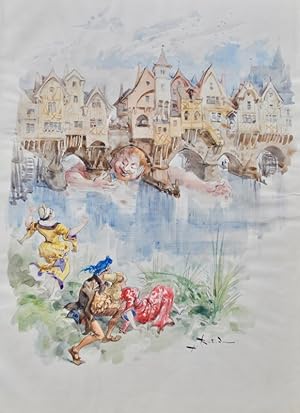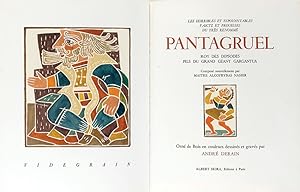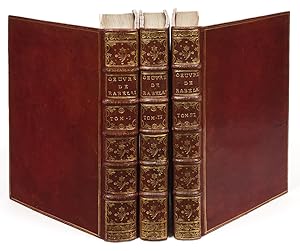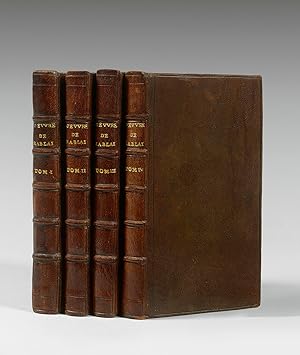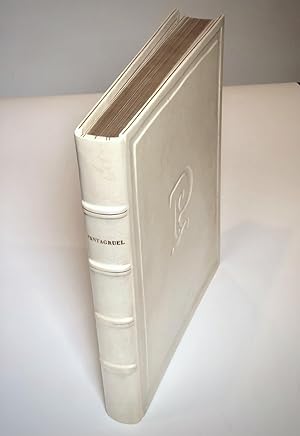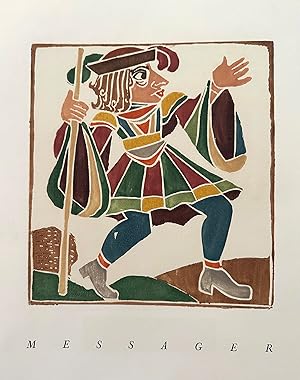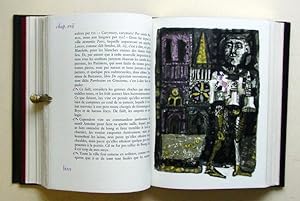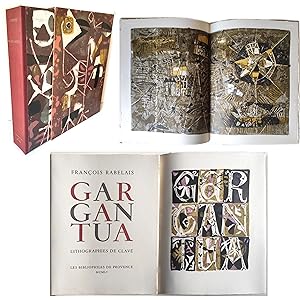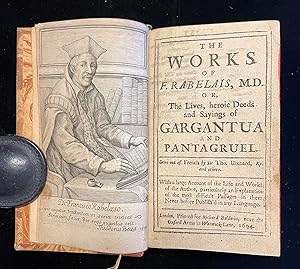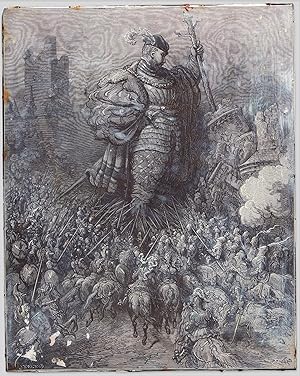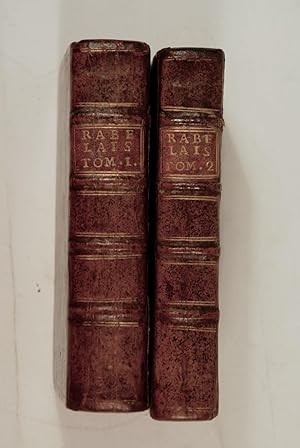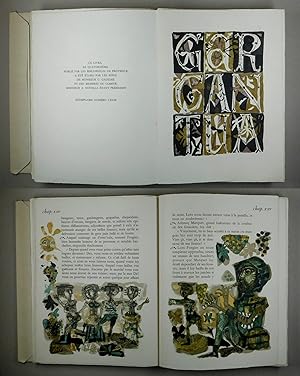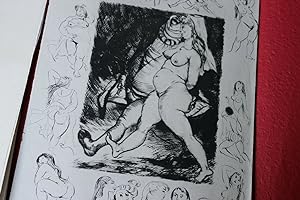françois rabelais (Plus de 6 100 résultats)
Type d'article
- Tous les types d'articles
- Livres (6 094)
- Magazines & Périodiques (1)
- Bandes dessinées
- Partitions de musique
- Art, Affiches et Gravures (6)
- Photographies
- Cartes
-
Manuscrits &
Papiers anciens
Etat
Reliure
Particularités
- Edition originale (270)
- Signé (47)
- Jaquette (328)
- Avec images (2 793)
- Sans impression à la demande (4 953)
Livraison gratuite
Pays
Evaluation du vendeur
-
[1:] Pantagruel, Roy des dispodes. [With:] [2:] Grands annales ou croniques tres veritables des gestes merveilleux du grand Gargantua et Pantagruel [.]. [With:] [3:] Le songe de Pantagruel avec la deploraion de feu messire Anthoine du Bourg
Edité par [1; 2:] [S.n. (Pierre de Tours?)]; [3:] Adam Saulnier, [1; 2:] [S.l. (Lyons?)];[3:] Paris, 1542
First edition of the first two books of "La vie de Gargantua et de Pantagruel" together, second of the authoritative text of both. Bound together with the first edition of François Habert's "Le songe de Pantagruel" and a woodcut portrait of Rabelais. In seventeenth-century red morocco, covers gilt-panelled "Au Semè" binding, consisting of interweaving double, mirrored "D" and an "S", probably the monogram of Dominique Séguier (1593-1659; Bishop of Auxerre and Meaux). Spine with four raised bands, the compartments decorated the same as the panels. Board edges and turn-ins gilt. Marbled endpapers renewed in the nineteenth-century. [1:] A-N8; [2:] A-P8 (P8 blank); [3:] A-F4., [1:] [104]; [2:] [120]; [3:] [24] leaves. First edition of the combined edition of the first two books of the pentalogy "La vie de Gargantua et de Pantagruel", which is the second edition of the authoritative text of both books. Supplemented with the contemporary first edition of François Habert's para-Rabelaisian work "Le songe de Pantagruel" and a woodcut portrait of Rabelais. This edition of Gargantua and Pantagruel is one of the three 1542 Lyonese editions, probably printed by Pierre de Tours, François Juste's successor. The text is identical to Juste's 1542 revised and enlarged edition, which was presumably prepared from a corrected copy by Rabelais himself who added a few previously unpublished passages and revised those related to the Sorbonne and the "Sorbonnistes" for which the work was formerly condemned by the Parliament (nevertheless condemned again in 1553). The present edition's preface warns the reader of a pirated edition, referring to Etienne Dolet's 1542 edition, a reprint of Denis Janot's Paris 1537 edition of the unexpurgated text. The preface, a note from "Limprimeur au Lecteur" is attributed to Rabelais by some bibliographer's, among them Brunet in his Recherches sur les éditions originales de Rabelais (Paris, 1852), however it was disproved by Plan ("C'est avoir une bien piètre opinion de son style" .). Extremely scarce edition. Rawles and Screech list only three copies. The third part of the volume is Habert's para-Rabelaisian work, constructed around three dreams, and supports the facultative marriage of the clergy which was an important issue of the time. The work was published in Paris by Adam Saulnier in 1542, two different editions are known form the same year, with minor differences on the title page. Exceedingly scarce, only one other copy known of the present one (Chantilly (Fr), Musée Condé), and two of the variant (FB 24772; USTC 27250). (No surviving copy is known of the undated Rouen edition, by Claude le Roy [Du Verdier: pp. L4r, p. 403].) Rabelais' woodcut portrait bound to the rear of the book. The portrait is identical to his first known portrait, which appeared in the 1569 Jean Martin edition of "Les Oeuvres". This copy contains seven addition leaves bound before the printed text, of which four are inscribed by five different neat hands. The earliest and longest is by an unknown hand, quotes Scévole de Sainte-Marthe's comments on Rabelais in French and Latin (from Virorum doctrina illustrium; Poitiers, 1598.). This is followed by a short unidentified possessor's inscription in French, which states that the book was bought in October 1806 and claims - erroneously - that it has belonged to the French noblewomen, and maîtresse-en-titre of Henry II, Diane de Poitiers (1499-1566), supposedly because of the binding's ornaments of the interweaving double "D", which was an emblem appeared often on her bindings. The leaf mounted on the inner front panel contains notes by three nineteenth-century hands in German, by the historian Karl Halling (1806-1837) who also attributes the binding incorrectly to Diane de Poitiers, a short note by an unidentified hand in pencil, and by the literary historian, Camillus Wendeler (1843-1902), providing bibliographical references to the content of the volume. Bibliographical references for Rabelais' Gargantua and Pantagruel: Rawles and Screech 26 (refers to only three known copies: BL, BN, and Fondation Bodmer, Geneva); Plan, 42-43; Brunet IV, 1049; Tchemerzine V, 273; Higman no. R 20; Gueltlingen vol. 9 pp. 7 no. 9; FB 45216; USTC 60196 For Habert's Le songe de Pantagruel: FB 24773; USTC 59263 . Some wear to joints and extremities. Seven leaves bound to the front, of which four with notes by five different later hands, and six blank leaves bound to the end, that precedes a woodcut portrait of Rabelais on a smaller leaf. Some copies contain the ten-page "Prognostication", this, just as the BNF copy lacks it. 1: "Pantagruel, Roy des dispodes [.]" bound first unlike other copies. Slightly over-trimmed with tiny losses to letters on three leaves (A7v; A8; M4v). Quire K and the first leaf of L water stained. A tear to the upper edge to M2 with small effect to the text. A tiny hole on the last leaf, and note in ink at the end. 2: Title page of "Grands annales [.]" replaced by a copy (probably early 20th century). A2-3 worn and restored, D5 restored at the edges. Bibliographical note in ink by a later hand to the upper edge of A2r. A tiny tear to the edge of D4. A small defect to I4 with effect to the text. K6v and K7r with notes in ink by contemporary hand, the notes are trimmed. Brown stain to lower edge of quire O. Light water stains occasionally. Both parts printed in bâtarde type, with 6-line and smaller criblé initials, a few Lombard initials, text in 58 chapters. 3: Illegible note or ownership inscription in ink crossed on title-page. Water stain to A1-2. Underlines in the text, and a few notes in ink by contemporary hand. Illegible note at the end, crossed. In seventeenth-century red morocco, covers gilt-panelled "Au Semè" binding, consisting of interweaving double, mirrored "D" and an "S", probably the monogram of Dominique Séguier (1593-1659; Bishop of Auxerre and Meaux). Spine with four raised bands, the compartments decorated the same as the panels.
-
Les Horribles et Espovantables Faictz et prouesses du très renommé Pantagruel, roy des Dipsodes, fils du grand géant Gargantua. Composé nouvellement par Maître Alcofrybas Nasier. Orné de bois en couleurs dessinés et gravés par André Derain.
Edité par Albert Skira, Paris, 1943
Signé
In-4, maroquin beige orné sur chaque plat d'une composition abstraite différente inspirée du graphisme de Derain, constituée de mosaïques de daim ocre, vert, rouge et bleu ciel, de listels bombés de maroquin noir, bordeaux ou rouge, et de formes incrustées en léger creux en daim bleu nuit; dos sans nerfs portant les noms de l'auteur et de l'artiste ainsi que le titre de l'ouvrage en petites capitales bleues, orange et vertes; doublures et gardes de daim violet, tranches dorées sur brochure, couverture imprimée. Chemise, étui (Jean Knoll, 1989).180 bois originaux en couleurs d'André Derain, dont un titre gravé pour la couverture, un frontispice, une vignette de titre, 22 à pleine page, 16 sur trois quarts de page, 88 in-texte, 34 lettrines et 17 culs-de-lampe. Tirage limité à 275 exemplaires numérotés sur vélin d'Arches signés par l'artiste. Un des 200 exemplaires . Exemplaire enrichi d'une grande esquisse de maquette pour le décor du premier plat, exécutée sur papier calque et signée par Jean Knoll JK 88-89.
-
The Works of F. Rabelais, M. D. Or, The Lives, Heroic Deeds and Sayings of Gargantua and Pantagruel . The Second Book . Treating of the Heroick Deeds and Sayings of the Good Pantagruel [WITH:] The Third Book . Containing the Heroick Deeds of Pantagruel the Son of Gargantua . Never Before Printed [AND:] Pantagruel's Voyage to the Oracle of the Bottle Being the Fourth and Fifth Books . To Which Is Added The Pantagruelian Prognostication; Rabelais's Letters, and Several Other Pieces by That Author.
Edité par Printed for Richard Baldwin. 1693 - 1694., London., 1693
Vendeur : Sims Reed Ltd ABA ILAB, London, Royaume-Uni
Livre Edition originale
5 vols. in 3. 12mo. (160 x 96 mm). pp. (vi), clvi, (i), (xxxvi), 230; viii, 9 - 208; 430, (xii); (iv), xii, iii (iv) - cxliv, (xl), 272; (i), (xi), 262, 34, (xiv). Engraved frontispiece portrait of Rabelais with quote from Theodorus Beza dated 1552, printed title to each book, 'The Life of Dr. Francis Rabelais' in Book I, publisher's and translators' dedications in Book I and Book IV, Rabelais' dedications throughout, extensive laudatory material in Book I (see below), text of Book I to Book V including in Book V the 'Pantagruelian Prognostication', further works by Rabelais and his 'Letters Written . During His Stay in Italy', indices in Book III and Book V, final leaf with advertisement ('Books Sold by Richard Baldwin' verso, numerous errors in pagination, occasional errors in signatures, occasional minor defects and stains, Book V with the full-page woodcut of the 'Holy Bottle' (page 209, leaf K4). Full contemporary blond calf with decoration in blind, boards ruled in blind to surround central ruled panel with fleurons at corners with interior drawer handle decor around central section of ruled darker calf, banded spine in five compartments with red leather label with gilt titles within roll tool border, board edges with decoration in blind, all edges striped red, black morocco-backed velvet-lined buckram box. A beautiful and complete copy of the very scarce first complete edition in English of Rabelais' 'Gargantua and Pantagruel' in an elegant English contemporary binding. François Rabelais (c.1494 - 1553), writer, physician, humanist, anatomist, scholar, monk and wit, published this, his magnum opus of satire, parody, wine and humour, over the course of many years, beginning in 1532 with the first book and concluding only after his death in 1553 with the publication of the possibly spurious fifth book c.1564. Rabelais' epic, first issued under the anagrammatic pseudonym 'Alcofribas Nasier' is indebted to Erasmus and his 'The Praise of Folie' and has been extraordinarily influential. To place Rabelais at the side of Dante, Boccaccio, Cervantes, Shakespeare and the giants of European literature is in no way to exaggerate his importance. Rabelais' influence on the development of the novel and the English novel in particular is uncontested. A first suggested imitation of Rabelais' style in English has been dated to as early as 1534 (Book I was likely published in 1532) while the influence on Swift, Sterne and Robert Burton is overtly apparent. Shakespeare is posited to have read Rabelais ('As You Like It' refers to 'Gargantua's mouth') and despite Joyce's denials both 'Ulysses' and 'Finnegans Wake' feature elements with characteristics of the Rabelaisian. The first two books were translated into English by Sir Thomas Urquhart (1611 - 1660, here listed as Urchard), a noted Royalist, author (he outlined his own universal language in his 'Logonpandecteision' of 1653) and translator, most famous for this highly-regarded translation of Rabelais and the likely apocryphal legend that he died of laughter on hearing of the restoration of Charles II. Urquhart's Book I and Book II were published in 1653 and 1664 before their reissue here by Peter Motteux together with the first printing of Urquhart's translation of Book III and Motteux's own translations of Book IV and Book V, the 'Pantagruelian Prognostication' and additional work by Rabelais including his 'Letters Written . During His Stay in Italy in the Year 1536'. The extensive laudatory material printed in Book I including 'Some Learned Mens' Opinion of Dr. Rabelais', Nahum Tate's 'A Familiar Epistle to Mr. Baldwin On His Publishing the Translation of Rabelais', 'On the Incomparable Works of the Learned Dr. Rabelais', On the Works of Rabelais Translated' and 'On the Most Diverting Works of the Learned Dr. Rabelais', are all printed here for the first time. Due to the complicated publication history - not to mention the complications of the bibliographical records - with Book III published the year before the remaining texts and the fact that Book I and Book II were likely issued together in a single volume (they are usually found bound as one) as (possibly) were Book IV and Book V, it is uncommon to find copies that are either complete or that are bound in uniform style at a contemporary date as is the present set. The present set is a wonderful exemplar of an important seventeenth century text in English preserved remarkably in its first binding. 'Belinski called Rabelais a genius, the sixteenth-century Voltaire, and his novel one of the best of times past. Because of his literary power and historical importance, Western literary critics and writers place him immediately after Shakespeare or even next to him. The French Romanticists, especially Chateaubriand and Hugo, included him among the greatest 'geniuses of humanity' of all times and nations. He was and is still considered not only a great writer but a sage and a prophet . his place in history among the creators of modern European writing, such as Dante, Boccaccio, Shakespeare, and Cervantes, is not subject to doubt. Rabelais not only determined the fate of French literature and of the French literary tongue, but influenced the fate of world literature as well . '. (Mikhail Bakhtin). [Wing 104, 104a, 107, 109, 110; Pforzheimer 814 (for the first edition of Books I & II), 815 & 816; ESTC R29255, R26911 & R2564; see 'Rabelais and His World' by Mikhail Bakhtin (trans. Helene Iswolsky), Bloomington, 1965].
-
Les Horribles et espouvantables faictz et prouesses du très renommé Pantagruel, roy des Dipsodes, fils de grand géant Gargantua. Bois en couleurs dessinés et gravés par André Derain.
Edité par Skira, Paris, 1943
In-4, plein vélin naturel, dos sans nerfs; doublures et gardes de daim havane, tête dorée, non rogné, couverture ornée d'une étiquette gravée. Etui.180 bois originaux en couleurs d'André Derain, dont un titre gravé sur la couverture, un frontispice, une vignette de titre, 22 à pleine page, 16 sur trois-quarts de page, 88 in-texte, 34 lettrines et 17 culs-de-lampe. Tirage limité à 285 exemplaires numérotés sur vélin d'Arches, signés par l'artiste. Un des 25 exemplaires hors commerce.
-
Les Horribles et Espouvantables faictz et prouesses du très renommé Pantagruel, Roy des Dipsodes fils du grand géant Gargantua, orné de bois en couleurs dessinés et gravés par ANDRE' DERAIN.
Edité par Composé nouvellement par Maitre Alcofrybas Nasier. Paris, Albert Skira, 1943,, Parigi, 1943
Vendeur : Libreria Antiquaria Pregliasco, Torino, Italie
Etat : molto buono. in-folio (mm 345x280), pp. 192, a fogli sciolti sotto copertina, camicia e astuccio editoriali. Titolo silografato in rosso e nero, con vignetta, antiporta figurato a piena pagina, 21 illustraz. a piena pag., 122 illustraz. n.t. tra cui alcuni finalini, 34 capilettera: tutte silografie originali di Andrè Derain (1880-1954), dipinte a mano in vivaci e splendidi colori. Tiratura unica di 275 esemplari complessivi impressi su magnifica carta forte "vélin d'arches". Il presente è il n.238/275 con firma autografa a inchiostro di Derain nel colophon. L'artista interpreta con grande arte il capolavoro di Rabelais, dà vita con estrema facilità a paesaggi policromi, animali, grotteschi; crea le articolazioni degli animali tramite arabeschi ornamentali, trasforma i vegetali in elementi perfettamente integrati nell'architettura tipografica. Le silografie, intagliate alla maniera del XV secolo, sono state dipinte con una nuova tecnica che necessita dell'intervento della mano dell'artista: le parti che compongono ciascuna silografia sono state colorate singolarmente da una équipe di praticanti secondo dei canoni stabiliti dal pittore; ogni esemplare può considerarsi un unicum. L'editore Skira, pur restando fedele al Garamond, interrompe la monotonia dell'uso di un unico carattere, introducendo finalini, vignette di diversi formati, iniziali colorate. Splendido e freschissimo esemplare, perfettamente conservato. Uno dei livres d'artiste più riusciti del XX.mo secolo. CHAPON, Le peintre et le livre, pp.155-157. RAUCH, n.38. THE ARTIST AND THE BOOK, 81. Book.
-
The First Book [Third Book; Fourth and Fifth Books] of the Works: Containing Five Books of the Lives, Heroick Deeds, and Sayings of Gargantua, And his Sonne Pantagruel.
Edité par London: [vol. I] printed [by Thomas Ratcliffe and Edward Mottershead] for Richard Baddeley; [vols. II & III] printed for Richard Baldwin, 1653-93-94, 1653
Vendeur : Peter Harrington. ABA/ ILAB., London, Royaume-Uni
Edition originale
First edition in English of Les Cinq livres des faits et dits de Gargantua et Pantagruel (c. 1532 - c. 1564), the work of two different translators published episodically over more than 40 years and so rarely found complete. An eccentric Scottish writer of stylistic and verbal virtuousity, or, in his own terms, a "logofascinated spirit" (Works, 231), Sir Thomas Urquhart has been considered by many a splendid match for his subject. "This translation has been called 'one of the most perfect transfusions of an author from one language into another that ever man accomplished'" (Pforzheimer 814). "In Rabelais, Urquhart found a writer whose style and imagination matched his own. Both 'cultivated a taste for a copious, robust and original vocabulary. To each of them, imagination furnished a rare selection of racy words in extraordinary abundance' (Roe, 11)" (ODNB). Urquhart's translation of Rabelais was his final work. The first volume (books I and II) appeared in 1653 and was reprinted in 1664, by which time Urquhart had, according to family legend, died laughing on hearing of Charles II's restoration. The third book, left unfinished by him and completed by the Huguenot emigré Peter Anthony Motteux (formerly Pierre-Antoine Le Motteux), appeared in 1693. Motteux's translation of books IV and V was published in 1694, bringing the cycle to completion. Motteux also published a revision of Urqhart's first two books, but the present set retains the original Urqhuart translation of that part. Rabelais "is often censured for his lapses into gross indecency and his physiological and medical obscenities. These may be explained partly as the work of an irrepressible jester writing for a coarse, outspoken society. His work incensed the theologians and was condemned by the parlement. He issued a revised edition of the first two books, attenuating his insulting references to the theologians, but it failed to placate the Sorbonne and both books were again condemned. Moliere drew on him, Voltaire and Balzac imitated him, but many have censured his obscenity" (Reid, 509-10). Rabelais had been known in England before this translation; to quote or name him was to signal one's intellectual credentials. A list of those who quoted or alluded to Rabelais before he was translated includes Ben Jonson, John Donne, John Webster, Francis Bacon, Robert Burton, and James I. Celia in Shakespeare's As You Like It mentions "Gargantua's mouth" as if it were already proverbial. Yet Rabelais's fame and influence increased after Urquhart's translation: his presence is strongly felt in Gulliver's Travels and Tristram Shandy. In spite of Joyce's well-known assertion that he had not read Rabelais, he clearly absorbed his work, as demonstrated by Finnegans Wake. Laid in is a hand-written letter dated 27 February 1925 from the London dealers Pickering & Chatto to the library of the Cleveland Chamber of Commerce describing the set they have despatched as the "finest we have ever possessed or even seen." ESTC R202203 & R202205 (noting, however, that apparently the two books were usually sold together), R26911, R2564; Pforzheimer 814, 815, 816. Five volumes bound in three as usual, octavo and duodecimo (therefore slightly varying sizes: vol. I, 166 x 107 mm; vol. II, 152 x 89 mm; vol. III, 155 x 90 mm). Skilfully rebound to match in full mottled calf, spines richly gilt in compartments, red morocco labels. Books I-II and IV-V each in 2 parts, with separate title pages, pagination, and register. Book III with engraved frontispiece portrait of Rabelais with quote from Theodorus Beza dated 1552, here bound after the title. Book V with full-page woodcut of the "holy bottle" on K4r. Book III with the 6 contents leaves moved from end to after the title, engraved portrait of Rabelais with small repair at lower outer corner. Book I-II contents likely washed, book III with a little marginal staining at beginning and end, book IV-V clean; all volumes a little tight in the gutter but still readable: overall, a very good set.
-
Couverture rigide. Etat : Très bon. S.l. [Paris, Prault], 1732.6 tomes reliés en 5 volumes in-8. Maroquin rouge, triple filet doré encadrant les plats, dos lisses ornés de roulettes formant faux-nerfs et de fleurons dorés, roulette dorée sur les coupes, roulette intérieure dorée, tranches dorées. Reliure de l'époque. 177 x 112 mm. --- Édition revue du texte, donnée par Le Duchat en collaboration avec La Monnoye. Tchemerzine, V, 319 ; Brunet, IV, 1060 ; Rahir, p.599 ; Plan 133. La première édition critique et commentée de Rabelais fut publiée à Amsterdam l'année précédente. Elle est ici rééditée par Jamet l'Aîné et Thomas Gueulette qui y ont ajouté des commentaires et des notes personnelles. L'édition est ornée de deux portraits de Rabelais par Scotin, dont l'un en frontispice représentant l'auteur écrivant son ouvrage, une carte dépliante du Chinonais ornée de 3 petits portraits de Rabelais en médaillons et 3 figures dépliantes représentant « La Devinière », l'intérieur de la chambre de l'auteur et « le dehors de la chambre de Rabelais à Chinon ». Les éditions anciennes des ?uvres de Rabelais sont toutes recherchées. Très bel exemplaire, particulièrement grand de marges (hauteur : 177 mm), conservé dans son élégante reliure en maroquin rouge de l'époque. Il provient de la bibliothèque de Beauchamp, avec timbre vert armorié sur les faux-titres et de la collection Guy du Boisrouvray. /// N.p. [Paris, Prault], 1732.6 parts bound in 5 8vo volumes [177 x 112 mm]. Red morocco, triple gilt fillet on the covers, flat spine decorated with gilt fleurons, gilt inner border, gilt edges. Contemporary binding. --- Revised edition of the text, given by Le Duchat in collaboration with La Monnoye. Tchemerzine, V, 319; Brunet, IV, 1060; Rahir, p.599; Plan 133. The first critical and commented edition of Rabelais was published in Amsterdam the previous year. It is here re-edited by Jamet l'Aîné and Thomas Gueulette who added comments and personal notes. The edition is illustrated with two portraits of Rabelais by Scotin, one of them as a frontispiece representing the author writing his work, one folding map of the Chinon country illustrated with 3 small medallion portraits of Rabelais and 3 folding figures representing "La Devinière", the inside of the author's bedroom and "the outside of Rabelais' bedroom in Chinon". All of antiquarian editions of Rabelais are sought-after. A very beautiful, particularly wide-margined (177 mm high), preserved in its elegant contemporary red morocco binding. It comes from the Beauchamp's collection, with green armorial stamp on half-titles and the Guy du Boisrouvray's collection.
-
Oeuvres. Edition conforme aux derniers textes revus par l'Auteur. Une notice et un Glossaire par Pierre Jannet.
Edité par Librairie illustrée [1885-1886], Paris, 1885
Signé
2 tomes en 2 vol. in-4, demi-maroquin rouge à coins, entièrement non rogné, couverture générale et couvertures conservées (Carayon). Premier tirage de l'illustration, contenant 49 planches hors texte en couleurs, en noir et en camaïeu, et de nombreuses compositions dans le texte.Un des cent exemplaires sur papier de Chine, numéroté 17.Exemplaire exceptionnel enrichi d'une aquarelle originale signée de Robida à pleine page, de deux couvertures de livraison (la première bleue, la seconde verte), de deux affichettes de librairie gravée en couleurs par Jules Chéret (réduite au format du livre), et des deux affiches de librairie par Chéret reliées à la fin du deuxième volume : CHERET (Jules). Affiche lithographiée en couleurs pour les Oeuvres de Rabelais, illustrées par A. Robida. Paris, Imprimerie Chaix, [1885]. Dimensions : 244 x 87 cm. CHERET (Jules). Affiche intérieure lithographiée en couleurs pour les Oeuvres de Rabelais, illustrées par A. Robida. [1885]. Dimensions : 127 x 87,5 cm.Ces deux superbes affiches lithographiées par Jules Chéret (1836-1932), parmi ses chefs-d'oeuvre, contribuèrent au grand succès de cette édition. Très bel état. Parfait exemplaire du livre majeur de Robida.Beraldi, Les Graveurs du XIXe siècle, IV, p. 188, n°226-226 bis.
-
Pantagruel. Les Horribles et Espouvantables Faictz et Prouesses du Très Renommé Pantagruel, Roy des Dipsodes, Fils du Grand Géant Gargantua.
Edité par Albert Skira., Paris., 1943
Vendeur : Sims Reed Ltd ABA ILAB, London, Royaume-Uni
Livre Signé
Folio. (348 x 284 mm). pp. 187, (ii), (i), (i). Half-title with large woodcut frontispiece verso, printed title in burgundy and black with large colour woodcut vignette and dedicatory verse verso, Rabelais' prologue and text illustrated with 179 colour printed woodcuts, including frontispiece, initials and ornamental tail-pieces, by André Derain; the woodcuts were printed by Roger Lacourière. Loose as issued in original publisher's wrappers with label to front cover, original parchment-backed chemise with label to spine and slipcase. André Derain's superb woodcuts - the only colour illustrations he made for a book - for François Rabelais' 'Pantagruel'. From the edition limited to 275 numbered copies, with this one of 200 ordinary examples on vélin d'Arches signed by Derain. André Derain's only book illustrations printed in colour and an outstanding example of the unusual process of polychrome printing from single blocks. Roger Lacourière, usually an intaglio printer, was so intrigued by the proposed process for Derain's illustrations that he collaborated with Derain in their production. The printing took two years in the special studio that Lacourière had established. 'Commissioned by the publisher Albert Skira in 1941, Derain worked for 3 years to produce the illustrations, co-operating with Lacourière and developing a novel printing process whereby the wooden blocks were inked in several colours simultaneously rather than the usual method of a separate block for each colour.' (From Manet to Hockney). [From Manet to Hockney 111; The Artist and the Book 81; Logan 194].
-
Oeuvres.
Edité par Jean Frédéric Bernard, Amsterdam, 1741
Vendeur : Librairie Pierre Adrien Yvinec, Paris, France
Membre d'association : ILAB
Livre
Couverture rigide. Etat : Très bon. Édition illustrée. 3 volumes in-4 (237 x 191 mm), 4 ff. n. ch., XXXVI pp., 526 pp. ; 2 ff. n. ch., XXXIV pp., 383 pp. ; 7 ff. n. ch., 216 pp. (mal chiffrées 218), 150 p., 18 ff. n. ch. Maroquin rouge, double filet doré encadrant les plats, dos à nerfs orné, double filet doré sur les coupes, dentelle sur les chasses, tranches dorées, des rousseurs (reliure de l'époque). "La plus importante édition illustrée de Rabelais au XVIIIe siècle" (Oberlé). Cette nouvelle édition des oeuvres de Rabelais est illustrée en premier tirage d'un frontispice dessiné et gravé par Folkema, un titre gravé par B. Picart pour les premier et troisième volumes, un fleuron sur le titre de ces deux volumes et un autre fleuron différent sur le titre du second, quatre planches dépliantes représentant une vue de la Devinière, une vue de la chambre de Rabelais, une vue de la cour intérieure de la Devinière et une carte dépliante du Chinonais avec portraits de Rabelais en médaillon, la figure de la Bouteille, un portrait de Rabelais gravé par Tanjé, douze vignettes et douze culs-de-lampe par Picart, et douze grandes estampes par Du Bourg gravées par Bernaerts, Folkéma et Tanjé. Une "édition très recherchée" (Tchemerzine). Tchemerzine ne cite que deux éditions des Oeuvres de Rabelais au XVIIIe siècle, toutes deux constituant la première tentative d'une lecture critique et commentée de Rabelais. Ce travail fut établi par Le Duchat et publié la première fois en 1711. De la bibliothèque du bibliophile Max Cointreau (1922-2016), homme politique et figure du monde du cognac qui épousa la fille du fondateur de Rémy-Martin et dirigea le groupe pendant 36 ans. Parallèlement à sa carrière professionnelle, il fut maire de la commune de Gensac-la-Pallue (1969-2001), conseiller général du canton de Segonzac (1973-1985) puis conseiller régional de Poitou-Charentes (1977-1980). Sa collection, commencée dès sa jeunesse par l'acquisition d'ouvrages sur le sucre et ses distillats, se tourna vers la Renaissance avec son épouse Geneviève, et tout particulièrement François Rabelais. Très bel exemplaire en maroquin rouge de l'époque. Cohen/de Ricci, Guide de l'amateur de livres à gravures du XVIIIe siècle, col. 840. Oberlé, Les Fastes de Bacchus et de Comus, 1989, n°353, p. 204. Plan, Les Éditions rabelaisiennes de 1532 à 1711, pp. 228. Tchemerzine, Éditions originales et rares XVe-XVIIIe siècles, V, p. 319.
-
uvres, avec des remarques historiques et critiques de Mr. Le Duchat. Nouvelle édition, ornée de figures de B. Picart.
Edité par Jean Frédéric Bernar, Amsterdam, 1741
3 volumes in-4, veau marbré, encadrement de filets dorés sur les plats, armes poussées or au centre, pièces de titre mosaïquées en maroquin rouge sur les dos à nerfs ornés à petits fers dorés, roulette or sur les coupes; doublures et gardes de papier peigne, tranches lisses rouges (reliures de l'époque).Premier tirage de cette belle édition, comportant un frontispice allégorique avec le buste de Rabelais couronné (dessiné et gravé par Folkema), un titre-frontispice dessiné et gravé par Bernard Picart répété aux tomes I et III, un grand portrait de l'auteur gravé par Tanjé, 12 figures hors texte gravées par Bernaerts, Folkema et Tanjé d'après Du Bourg, 3 planches topographiques dépliantes, une carte, la figure de la dive bouteille, 2 fleurons de titre (dont un répété aux tomes I et III), 13 vignettes et 12 culs-de-lampe par Bernard Picart. Bel exemplaire relié à l'époque, aux armes de Claude Des Salles, marquis de Bulgnéville, conseiller d'Etat, premier capitaine des gardes du corps du duc de Lorraine, gouverneur de Maubeuge en 1771 (OLIVIER. Manuel de l'amateur de reliures armoriées françaises, pl. 2339).
-
La Plaisante et Ioyeuse histoyre du grand Geant Gargantua. . Second livre de Pantagruel, Roy des Dipsodes. Plus les merveilleuses navigations du disciple de Pantagruel, dict Panurge.
Edité par Valence [Geneva], chez Claude La Ville, 1547 [ie. 1600], 1600
Vendeur : Sokol Books Ltd. ABA ILAB, London, Royaume-Uni
Livre
Hardcover. Etat : Good. 16mo. Three vols. in one. pp. 245 [xi]; 320; 349 [iii]. A-Q8 (Q4-8 blank); A-V8;A-Y8 (Y8 blank). Roman letter, charming grotesque woodcut of singers on t-p (repeated in text), separate dated title to second and third parts, 58 small text woodcuts in first vol, 50 in the second and 59 in the third, three small woodcut initials, early bibliographical note on pastedown, mss. autographs crossed out on fly and pastedown. Light age yellowing, some minor browning, small tear to lower outer corner of t-p just touching a few letters of text on verso, some edges softening. A good copy in seventeenth century speckled calf, spine with raised bands single gilt ruled in compartments, filled with repeated gilt scrolls, head of spine and joints worn, a.e.r. A beautifully illustrated counterfeit edition of the major works of Rabelais, copying the celebrated Valence edition of 1547. The illustration is composed of a series of 167 vignettes in the Lyon-style, a very charming form of popular imagery, many of which appear to have been copied from the first edition. The quality of the printing is clearer than in the original; Brunet Dans cette contrefaçon, les figures sont un peu plus nettes que dans l original . Many early edns. of the various parts of Rabelais works do not state the printer or place of publication, or in a few cases give false information, owing to the ribald and in places anti-clerical subject-matter, which exposed his works to censorship: they had, for example, been on the papal Index since at least 1559. Due to the nature of their clandestine printing they were often cheaply and hastily printed and they were popular works, usually well read, so good copies such as this one are particularly rare. The editors here went to a good deal more trouble than in other counterfeit editions of the period, such as those printed by Fuet or Martin, with its very charming suite of illustration. Rabelais was, for generations, read only in distorting editions which generated jokes of their own. All his Greek was turned into gibberish; careless arrangement of material by printers led Sterne to believe that Rabelais was sporting typographically with his reader by displacing a poem or by leaving blanks hence the blanked-out chapter in Tristram Shandy. These editions sometimes printed clandestinely in France kept Rabelais alive but helped to create a Rabelais legend which had nothing to do with the works he wrote. Montaigne enjoyed Rabelais, finding him at least simplement plaisant ( straightforwardly delightful ). Molière assumed that his audience enjoyed him too. And they did. For many Frenchmen Rabelais embodies that Gaulois humour which they love to see as a permanent element in the national character. M. A. Screech. London Review of Books. Vol. 6 No. 17 · 20 September 1984. pages 11-13 With an immense erudition, representing almost the whole knowledge of his time, with an untiring faculty of invention, with the judgement of a philosopher and the common sense of a man of the world, with an observation which let no characteristic of the time pass unobserved and with a ten-fold portion of the special Gallic gift of good-humoured satire, Rabelais united a height of speculation and depth of insight and vein of poetical imagination rarely found in any writer his work is the mirror of the C16th. in France, reflecting at once its comeliness and its uncomeliness, its high aspirations, its voluptuous tastes, its political and religious dimensions, its keen criticism, its eager appetite and hasty digestions of learning, its gleans of poetry and its ferocity of manners . Enc. Brit. 13th. ed. BM STC fr. C16th. Rawles and Screech 39. Brun, p. 280. Plan 85. Brunet, IV, 1051-1052. Tchemerzine, V, p. 297.
-
Couverture rigide. Etat : Très bon. S.l. [Rouen], 1659 (1669) [mais 1675].2 tomes reliés en 4 volumes in-12 de : I/ (12) ff., 262 pp. ; II/ pp. 263 à 488, (5) ff. de table ; III/ 210 pp. ; IV/ pp. 211 à 459, (9) pp. de table et 1 figure dans le texte p. 347. Maroquin brun olive, filet estampé à froid encadrant les plats, dos à nerfs, roulette dorée sur les coupes, roulette intérieure dorée, tranches dorées. Reliure de l'époque.151 x 85 mm. --- Précieuse édition des ?uvres de François Rabelais, l'une des dernières parues au XVIIe siècle.« C'est une contrefaçon antidatée. Elle contient les mêmes pièces que les deux éditions précédentes, avec, en plus, une ?Clef du Rabelais', qui trahit la fausseté de la date. Cette ?clef', en effet, a paru pour la première fois en 1675.Dans le « Bulletin du bibliophile' de juin-juillet 1851, M. J. Chenu a publié une note sur cette édition, qu'il croit véritablement imprimée par les Elzevir. La simple inspection de la sphère imprimée sur les titres démontre l'impossibilité de cette hypothèse. L'édition que nous décrivons ? fort élégante, d'ailleurs, autant au point de vue typographique qu'à celui de la qualité du papier ? nous parait avoir été imprimée à Rouen.Elle a été elle-même contrefaite plusieurs fois, probablement à Bruxelles. Nous en avons sous les yeux trois différentes imitations (avec la date de 1659 sur les deux tomes), mal imprimées et sur mauvais papier ».Plan, Les Éditions de Rabelais, 130. « C'est une contrefaçon du Rabelais Elzevir, qui est postérieure à l'édition de 1675. Elle a été elle-même contrefaite plusieurs fois sous les adresses de Bruxelles, Henri Prix, ou d'Amsterdam, Adrian Moetjens ». (Tchemerzine, V, 318).Elle est précédée d'une notice sur la vie de Rabelais. Le tome second comporte en outre un alphabet en 77 pages consacré à l'explication des termes utilisés par Rabelais dans ses ?uvres ainsi qu'une Clef.L'édition est ornée d'une figure à pleine page r /// N.p. [Rouen], 1659 (1669) [but 1675].2 parts bound in 4 volumes 12mo [151 x 85 mm] of: I/ (12) ll., 262 pp.; II/ pp. 263 to 488, (5) ll. of table ; III/ 210 pp. ; IV/ pp. 211 to 459, (9) pp. of table and 1 figure in the text on p. 347. Olive brown morocco, blind-stamped fillet around the covers, spines ribbed, gilt edges. Contemporary binding. --- Precious edition of François Rabelais's Works, one of the last to be published in the seventeenth century.« It's a backdated counterfeit. It contains the same pieces as the two previous editions, with, in addition, a 'key to the Rabelais', which betrays the falseness of the date. This 'key', indeed, appeared for the first time in 1675.In the June / July 1851 ?Bulletin of the Bibliophile', M. J. Chenu published a note on this edition, which he believes to be truly printed by the Elseviers. A simple inspection of the sphere printed on the titles demonstrates the impossibility of this hypothesis. the edition we describe - elegant, besides, as much as from the typographical point of view as well as the quality of paper - seems according to us to have been printed in Rouen.It has been counterfeited itself several times, probably in Brussels. We have under our eyes three different imitations (with the date of 1659 on the two parts), badly printed and on bad paper ».Plan, Les Éditions de Rabelais, 130.It is preceded by a note on the life of Rabelais. In addition, the second part includes a 77-page alphabet devoted to the explanation of the terms used by Rabelais in his Works as well as a Key. The edition is illustrated with a full-page figure representing the Dive Bottle. Old editions of Rabelais's Works are all much sought-after. A very attractive copy, of great purity, of this elegant edition of the Works of Rabelais, preserved in its contemporary binding in olive morocco, a condition of the utmost rarity for the ancient editions of Rabelais.
-
Precious edition of the works of François Rabelais published in the 17th century. ?Nice edition printed with Elsévirian characters, but which we believe came from the presses of a printer in Brussels. It is certainly a copy of that of 1663, of which it reproduces the text page for page and almost always line for line. Due to a typographical error, the frontispiece of the first volume bears the date M.D.LIX, while that of the second volume reads the date M.D.LXIX, which must be the true one, since there are copies in which the error has been corrected; and of which the two titles are from 1669. ? The first volume has 12 preliminaries ll., 488 pp. and 5 ll. for the table. Pages 215 and 216 are repeated as in the 1663 edition. The second volume contains 459 pp., the table occupies 7 pp., and the Clef du Rabelais, which is not found in the 1663 edition, nor in the reprints which were made in 1666, in 1675 and in 1691, is contained in 2 pp. » (Brunet, IV, 1059). "In the Bulletin du bibliophile of June-July 1851, Mr. J. Chenu published a note on this edition, which he believes was really printed by the Elzévirs. A simple inspection of the sphere printed on the titles demonstrates the impossibility of this hypothesis. The edition ? highly elegant furthermore, from the typographical point of view as well as from the quality of paper - seems to us to have been printed in Rouen. It was itself forged several times, probably in Brussels. We have before us three different imitations (with the date 1659 on both volumes), badly printed on poor paper. There are others, with the same date, & the indication: A Bruxelles, chez Henri Frix, vis-à-vis la Madeleine, & Amsterdam, Adrien Moetians, à la Librairie Française; still others, bearing the dates 1721, 1724 & 1734, in Brussels, chez Nicolas Langlois, proche la Madeleine." (P. P. Plan, Bibliographie rabelaisienne). In all his works, man must make himself a co-operator with God. This morality of effort and confidence in God's grace is opposed to Calvin's doctrine of predestination, which Rabelais condemns, and to the atheism that the positivists of the turn of the century, frightened by the jokes about religion, despite the monastic tradition, wanted to see in Rabelais. Beyond this quest for oneself, this propaedeutic of knowledge symbolised by the journey of the Fourth Book, the work of Rabelais is also a violent denunciation of all social vices, a satire of conformism: criticism of monks, pilgrimages, confession, the worship of saints following Erasmus; criticism of the vices of the papacy in the episode of the Papimanes or the Isle Sonante; criticism of the sorbonnards of the sophists; of justice. It is also a practical treatise on pedagogy, a veritable institution of the prince, a social utopia with the harmony of the Thelemists. An attractive copy finely bound in contemporary red morocco, one of the rarest conditions for early editions of Rabelais.
-
Pantagruel. Les Horribles et Espouvantables Faictz et Prouesses du Très Renommé Pantagruel, Roy des Dipsodes, Fils du Grand Géant Gargantua.
Edité par Albert Skira, Paris, 1943
Vendeur : Blue Sky Rare Books, Palm Springs, CA, Etats-Unis
Edition originale
Leather bound. Etat : near fine. First Edition. Folio Powerfully bound in full white morocco, with a large embossed P on the top board. Binding not signed, but very high quality work with five raised bands, gilt accents, leather inner hinges, beautiful watercolor endpapers. Binding with a couple of small scratches and ordinary wear to the white leather, no bumps. Contents completely fine, original wrappers bound in, free of foxing. Top edge gilt, others deckled. 179 color woodcuts, including numerous initials, printed byRoger Lacourière. This is rare example of multi-color printing from single blocks. Printed on thick Arches paper and signed by Derain in the colophon page. A Century for the Century 45, The Artist and the Book 81, From Manet to Hockney 111, Skira 91. A beautiful book.
-
Les Horribles et espouvantables faictz et prouesses du très renommé Pantagruel Roy des Dipsodes fils de grand géant Gargantua. Derain's main illustrated work, with 128 (21 full-page) original color woodcuts
Edité par Albert Skira, 1943
Vendeur : Marninart, Inc (ABAA - ILAB), Reston, VA, Etats-Unis
Livre Edition originale Signé
Hardcover. Etat : Very Good. 1st Edition. François Rabelais, illustrated with colored woodcuts drawn and engraved by André Derain Limited numbered edition of 275 copies, of which this copy is on of 200 in Velin d Arches, signed by the artist on the justification page. Derain's main illustrated work, with 128 (21 full-page) original color woodcuts, 34 color woodcut initials and 18 color woodcut final vignettes. André Derain took full charge of the printing process from the carving of the wood blocks, in the manner of 15th-century cardmakers, to the coloring to which he added special attention to preserve the warm tone of his woodblocks, using a hand - coloring technique: all the wooden blocks had to be colored one after the other by a team of practitioners, in their nuances, according to a scheme established by the painter and repeated in each volume. Loose as issued in half parchment wrappers, chemise and slipcase. Text selection by A. Lefranc, illustrations printed by Andre Derain and Roger Lacourière. Light foxing at the margin, chemise in poor condition. Ref: The Artists and the Book 81. Signed by Illustrator(s).
-
Gargantua. Lithographies de Clavé.
Edité par Marseille, Les bibliophiles de Provence, 1955
Vendeur : antiquariat peter petrej - Bibliopolium AG, Zürich, ZH, Suisse
2° (39 x 29 cm), 6 Bl., 250 röm. gez. S., 11 Bl., mit 55 mehrfarb. Orig.-Lithogr. (davon 4 doppelseitige u. 15 ganzseit. Abb.), sowie 56 farbigen Initialen und Vignetten. 5 Bl. Druck in Schwarz und Violett auf Vélin d'Arches., Schwarzer Ganzmaroquin-Bd. m. vergoldetem Rückentitel, Rundumgoldschnitt, rote samtene Vorsätze. Mit Halbleder-Umschlag mit Sandelholzdeckeln, in einem Sandelholz-Schmuckschuber., Sehr schönes, opulent illustriertes Exemplar. Nr. CLXXIX von 200 Exemplaren. In einem Meistereinband des grossen Pariser Künstler-Buchbinders Henri Creuzevault (1905 - 1971), gestempeltl auf Deckelinnenseite. Die Initialen und Vignetten in Holz geschnitten von Blaise Monod.- Antoni Clavé (1913- 2005), peintre catalan, décorateur de théâtre et illustrateur. À l'instar de Picasso, qu'il admirait beaucoup, Antoni Clavé a été très inspiré par la corrida. Sur ce sujet, il a produit un grand nombre de lithographies. En 1977, il expose ses premiers trompe-l'?il. Le Musée national d'Art moderne de la ville de Paris lui consacra une rétrospective en 1978. La Biennale de Venise expose plus de 100 ?uvres au Pavillon espagnol en 1984. 3500 gr. Schlagworte: Illustr. Bücher - Originalgrafik.
-
Gargantua and Pantagruel
Edité par Folio Society, 2019
Vendeur : Fine Binding Books, Barker, TX, Etats-Unis
Livre
Quarter-Leather. Etat : Like New. Gustave Doré (illustrateur). Limited to 500 hand-numbered sets. Introduced by Stephen Greenblatt; Translated by Professor M. A. Screech; Essay by Milan Kundera. Quarter-bound in goatskin leather with cloth sides blocked in gold foil on front and spine. Gilded top edges. Ribbon markers. Set in Bulmer. 1,000 pages in total. 61 full-page engraved illustrations including the frontispiece. 658 smaller engraved illustrations. Numerous ornamented initials throughout. Handmade cloth-bound slipcase printed in gold with designs by Doré. Measured by 14¼? × 10¼?.
-
Andreae ab Exea,. De aerario, fiscoque, ac utriusque ratiociniorium praefectura libellus nunc primum in lucem editus
Edité par Sebastiano Grifio, 1532
Vendeur : Libreria Antonio Pettini, ROMA, RM, Italie
Livre
Rilegato. Etat : buono. In-4°, 48pp, frontespizio figurato con marca editoriale (motto Virtute duce, comite fortuna), grifo xilografato a p47v. Introduzione attribuita a Rabelais. Legatura in cartonato, tagli in azzurro.Cfr. Romain Menini: Franciscus Rabelæsus - sauf son nom : pour l'attribution de l'avertissement au lecteur du De Aerario fiscoque d'André d'Exea.
-
GARGANTUA. lithographs by Antoni Clavé
Edité par Les Bibliophiles de provence, 1955
Vendeur : Midori Art Books, Paris, France
Livre Edition originale
Hardcover. Etat : Fine. Etat de la jaquette : Fine. 1st Edition. In-4 (38,5 x 28 cm). En feuilles, couverture blanche illustrée rempliée, chemise et étui de l'éditeur illustré par l'artiste. Les aventures de Gargantua savamment illustrées par l'artiste franco-espagnol ANTONI CLAVE (1913-2005). L'illustration comprend 59 lithographies originales en couleurs, dont un frontispice, plusieurs double-pages et hors-texte et de nombreuses vignettes, bandeaux et culs-de-lampe dans le texte. Dans son étui illustré par l'artiste. Le texte et les lettrines furent composées à la main à l'atelier Priester Frères et les lithographies tirées à l'atelier Desjobert. Tirage à 220 exemplaires sur vélin d'Arches. Il nécessita plusieurs années de travail, entre octobre 1951 et juin 1955. TRES BEL EXEMPLAIRE. Photographies sur demande. Réf : Clavé, XI, pp. 224-225. Very nice book storying GARGANTUA's adventures illustrated by 59 originals colored lithographs plates and in text, by the Spanish-French painter and engraver ANTONI CLAVE. VERY GOOD CONDITION.
-
2 volumes grand in-12 de (12) ff., 488 pp., (5) ff. de table - 459, (9) pp. de table et de clef, maroquin rouge, filet doré sur les plats, dos à nerfs ornés de caissons de fleurons dorés, coupes et bordures décorées, tranches dorées sur marbrure (reliure de l'époque). Jolie contrefaçon rouennaise des ?uvres de "Maître François". En dépit de la date de 1669 figurant au faux-titre - et 1659 au titre du 1er tome ! -, cette édition a paru postérieurement antidatée. Elle démarque en effet une précédente édition elzévirienne de 1663, mais complétée par une Clef parue pour la première fois en 1675. Cette dernière date constitue donc un terminus post quem sûr pour notre ouvrage. Cette édition à la sphère "fort élégante autant du point de vue de la typographie qu'à celui de la qualité du papier" (Plan) sera elle-même plusieurs fois contrefaite. Très bel exemplaire en maroquin de l'époque dans le style de Boyet. De la bibliothèque de Monsieur Jullien, Procureur Général des Eaux et Forests de France, avec son ex-libris armorié. Tchemerzine, Editions originales et rares XVe-XVIIIe siècles, V, 318a. - Plan, Bibliographie rabelaisienne, n° 130.
-
Les Oeuvres de M. Francois Rabelais, Docteur in Medecine
Date d'édition : 1588
Vendeur : Maggs Bros. Ltd ABA, ILAB, PBFA, BA, London, Royaume-Uni
With woodcut of bottle, strong impression, on FFF8. 16mo (119 x 76mm). 402, [10]; 576, [12]; 210, [38]pp. Contemporary Lyonnese blind-tooled calf, covers with double fillet in blind, central arabesque oval stamp, remains of green cloth ties (loss to length of spine revealing bands and quires, joints cracked but holding, extremities worn, stain to upper cover). Lyon: Jean Martin, A lovely copy of a rare edition of Rabelais' complete works, in contemporary binding, untouched. The text for the present edition is based on that in the previous Martin printing of 1586. Rabelais' infamous comic masterpiece about the giant Gargantua and his son, Pantagruel runs the gamut from burlesque to satire and as such, was condemned by the Sorbonne for its obscenity and heresy; nevertheless the author enjoyed the protection and support of several important patrons, including Margaret, Queen of Navarre, and the work itself was immensely popular. Provenance: 1. Price inscription on front endpaper in early hand, ?Nic. Hare pret. 4s? 2. Ownership inscription 'Robt. Digby' on title page in eighteenth-century hand. 3. Quaritch note and price code on rear pastedown. 4. Exlibris of Kenneth Rapoport on front pastedown. Rawles & Screech, 74. Not in Plan (Plan 112, dated 1588 and with false imprint 'Jean Martin', is an edition distinct from this one). OCLC: US: Winterthur, Johns Hopkins, Cleveland, Princeton. UK: BL only.
-
The Works of F. Rabelais, M. D. Or, The Lives, Heroic Deeds and Sayings of Gargantua and Pantagruel . Done out of French by Sir Tho. Urchard,.With a large Account of the Life and Works, of the Author, particularly an Explanation of the most difficult Passages in them Never Before Publifh'd in any Language
Edité par Printed for Richard Baldwin, London, 1694
Vendeur : Johnnycake Books ABAA, ILAB, Salisbury, CT, Etats-Unis
Hardcover. Etat : Very Good. Second English-lanquage Edition. Printed for Richard Baldwin, 1694., London.12mo, half leather, gte, 8.25 x 14.5cm.(vi), clvi, (i, with errata), (xxiv), 230; viii, 9 - 208. Engraved frontispiece portrait of Rabelais with quote from Theodorus Beza dated 1552. First edition in English. Owbership name of Joseph Oliver, New Orleans, February 6, 1865 front fly. late 19thc binding, leather spine darkened.
-
Pas de couverture. Etat : Très bon. Matrice ayant servi à l'impression. [Paris, ateliers Garnier, vers 1872] Plaque de cuivre (250 × 200 mm) réalisée par galvanoplastie d'après le bois gravé par Désiré Quesnel sur un dessin de Gustave Doré ; clouée sur une « semelle » en bois (largeur : 20 mm). Matrice d'impression pour l'une des illustrations hors-texte des Oeuvres de Rabelais publiées en 1873 (2 volumes in-folio). Cette image (I, pp. 112-113) est une nouvelle version de celle, plus petite et moins élaborée, publiée dans l'édition de 1854 à l'adresse de J. Bry (pp. 82-83, inversée). Les dessins du nouveau Rabelais furent d'abord gravés sur bois d'après les dessins de Doré, puis transférés par électrolyse sur une plaque de cuivre, matériau bien plus résistant et stable que le bois lorsqu'il s'agissait d'imprimer un très grand nombre d'exemplaires.
-
Pas de couverture. Etat : Très bon. Matrice ayant servi à l'impression [Paris, ateliers Garnier, vers 1872] Plaque de cuivre (251 × 222 mm) réalisée par galvanoplastie d'après le bois gravé sur un dessin de Gustave Doré ; clouée sur une « semelle » en bois (largeur : 20 mm). Il n y a pas de nom de graveur. Matrice d'impression pour l'une des illustrations hors-texte des Oeuvres de Rabelais publiées en 1873 (2 volumes in-folio). Cette image (II, pp. 66-67) ne figure pas dans l'édition J. Bry de 1854. Les dessins du nouveau Rabelais furent d abord gravés sur bois d après les dessins de Doré, puis transférés par électrolyse sur une plaque de cuivre, matériau bien plus résistant et stable que le bois lorsqu'il s agissait d'imprimer un très grand nombre d exemplaires.
-
Pas de couverture. Etat : Très bon. Matrice ayant servi à l'impression [Paris, ateliers Garnier, vers 1872] Plaque de cuivre (253 × 215 mm) réalisée par galvanoplastie d'après le bois gravé par Émile Deschamps sur un dessin de Gustave Doré ; clouée sur une « semelle » en bois (largeur : 20 mm). Matrice d'impression pour l une des illustrations hors-texte des Oeuvres de Rabelais publiées en 1873 (2 volumes in-folio). Cette image (I, pp. 106-107) ne figure pas dans l'édition J. Bry de 1854. Les dessins du nouveau Rabelais furent d abord gravés sur bois d'après les dessins de Doré, puis transférés par électrolyse sur une plaque de cuivre, matériau bien plus résistant et stable que le bois lorsqu'il s agissait d'imprimer un très grand nombre d exemplaires.
-
Les oevvres.Derniere edition de nouueau reueue & corrigee.
Edité par Jean Fuet, Antwerp, 1605
Vendeur : Sokol Books Ltd. ABA ILAB, London, Royaume-Uni
Hardcover. Etat : Good. 12mo., pp. 347 [vii], 469, [ix], 166 [xxxii], some pp. misnumbered, lacking final blank. Roman letter, some Italic. Both titles with small typographical ornaments (separate t.-p. to Bk. V,) full-page woodcut of the Bottle, woodcut head and tail pieces and initials, early owner's autogr. M Burns at foot of t.-p. Light age yellowing, small tear to upper outer corner of t-p just touching one letter, cut close at fore-margin just touching the text block on a few pages in the first vol. and on one page in the second. A good copy in contemporary English speckled calf over boards, covers bordered with a double gilt rule, spine with gilt ruled raised bands, gilt lettered morocco labels, a.e.r. The 2nd or the 3 (or possibly even 4th) edns. of the works of Rabelais which purport to have been printed at Antwerp by Jean Fuet. There are doubts, however, as to its true origin. Neither Belgica Typographica nor BM. STC. Dutch nor Peeters-Fontainas records anyone by the name of Fuet based at Antwerp; the BM. Catalogue of Books from the Low Countries 1601-21 suggests the work was printed in France, and Brunet states that the location is believed to have been Rouen. The name of one Rouen printer, Raphaël du Petit-Val, is tentatively provided by Rawles and Screech for another edn. published in 1613, and this is perhaps one possibility for ours too. But Rawles and Screech do not themselves suggest a French provenance for this and the other 2 (or 3) edns. said to be printed by Jean Fuet, so the question must remain open. Many early edns. of the various parts of Rabelais' works do not state the printer or place of publication, or in a few cases give false information, owing to the ribald and in places anti-clerical subject-matter, which exposed his works to censorship: they had, for example, been on the papal Index since at least 1559. "With an immense erudition, representing almost the whole knowledge of his time, with an untiring faculty of invention, with the judgement of a philosopher and the common sense of a man of the world, with an observation which let no characteristic of the time pass unobserved and with a ten-fold portion of the special Gallic gift of good-humoured satire, Rabelais united a height of speculation and depth of insight and vein of poetical imagination rarely found in any writer. his work is the mirror of the C16th. in France, reflecting at once its comeliness and its uncomeliness, its high aspirations, its voluptuous tastes, its political and religious dimensions, its keen criticism, its eager appetite and hasty digestions of learning, its gleans of poetry and its ferocity of manners". - Enc. Brit. 13th. ed. The Pléiade, Marot, Montaigne and Amadis were all indebted to him. A handsome copy with early British provenance. BM. STC. Fr. C17th R-56. Rawles & Screech 83. Tchemerzine V 315. Brunet Suppl. Pt. II 368. Simon Bibl. Bacc. 555 (another ed.) French.
-
Gargantua. Lithographies originales en couleurs d'Antoni.
Edité par (S.l.). Les Bibliophiles de Provence. 1955., 1955
Vendeur : Daniel Thierstein, Biel, Suisse
Edition originale
40,5x30,5 cm. 251 p., 4 f. n.ch. en feuilles. Avec 61 lithographies originales d'Antoni Clavée en couleurs hors-texte, dans le texte, en marge ou à double page et 61 lettrines et culs-de-lampe en couleurs, gravés par Blaise Monod d'après les originaux de Clavé. Broché couverture rempliée sous chemise et emboîtage décorés d après l artiste. No. CXLIX des CC exemplaires sur grand vélin d'Arches à la forme au format in-4 Jésus (38x28 cm), tirage total de 220 exemplaires. - Coins de la chemise et d'mboîtage frottés. Sprache: französisch.
-
Gargantua & Pantagruel: Affentheurlich naupengeheurliche Geschichtklitterung: von Thaten und Rhaten der vor kurtzen langen unnd je weilen Vollenwolbeschreiten
Edité par Bernhard Jobin, Strassbiourg, 1590
Vendeur : Pazzo Books, Boston, MA, Etats-Unis
Hardcover (Full Leather). Etat : Very Good Condition. Tobias Stimmer (illustrateur). Third Edition. Contemporary alum tawed pigskin, blindstamped, brass clasps, some rubbing to spine, ink warks, small piece of brass added to reinforce one clasp - a fine contemporary binding. A few marks and underlines in an early hand, pencil notes on rear endpaper, title page printed in red and black with the slightly off center red to the lobster and snake (this new to the 1590 edition). Third edition, first published in 1575, this was the final edition revised by Fischart. A free translation cum adaptation of Rabelais' masterpiece. As Rabelais wrote under the anagram Alcofribas Nasier, Fischart uses the acrostic (written under the title page vignette) "Im Fischen Gilst Mischen" (to fish well it is necessary to mix) J. F. G. M. : Johann Fischart genannt Mentzer. 565pp, in text illustrations. Fischart coined "Geschichtsklitterung" (pseudo-history) for this free translation of Rabelais' work often called the Finnegan's Wake of the 16th century. Provenance: Ken Rapoport (ex-libris) Size: Octavo (8vo). Illustrator: Tobias Stimmer. Quantity Available: 1. Shipped Weight: Under 1 kilo. Category: Literature & Literary; Inventory No: 048408.
-
GARGANTUA. Texte d'époque intégral. Pointes sèches originales de Gaston Barret.
Edité par Editions d'Art Eryx, Paris. S.d. (1956), 1956
Vendeur : Librairie L'amour qui bouquine, ALISE SAINTE REINE, France
Livre Edition originale
Couverture souple. Etat : Comme neuf. Edition originale. François RABELAIS. Gaston BARRET (illustrateur). GARGANTUA. Texte d'époque intégral. Pointes sèches originales de Gaston Barret. Editions d'Art Eryx, Paris. S.d. (1956) 1 volume grand in-4 (28.5 x 23 cm), en feuilles, sous couverture rempliée de papier rouge imprimée en noir sur le premier plat. 194 pages. 1 portrait de l'auteur en frontispice + 14 compositions hors-texte dont 1 sur double-page. Sans emboîtage. Tirage à 395 exemplaires (plus quelques exemplaires nominatifs réservés aux collaborateurs et à l'artiste). Celui-ci, un des 14 exemplaires sur Japon comprenant en plus des 15 planches du volume : - un croquis original (Gargantua enfant en train d'uriner depuis les toits de Notre-Dame) - une suite des illustrations du livre avec remarques tirée en bleu sur Chine (15 planches) - une suite des illustrations du livre avec remarques tirée en sanguine sur Chine (15 planches) - une suite des illustrations du livre avec remarques tirée en noir sur Chine (15 planches) - une suite de 4 planches refusées avec remarques tirées en bleu sur Chine (4 planches) - une suite de 4 planches refusées avec remarques tirées en sanguine sur Chine (4 planches) - une suite de 4 planches refusées avec remarques tirées en noir sur Chine (4 planches) - une suite de 4 planches refusées sans remarques tirée en noir sur Chine (4 planches) - un bon à tirer "Gargantua bébé" (épreuve coloriée avec indications dans les marges) - un zinc ayant servi de pochoir pour la mise en couleurs d'une composition. - une suite complète des 15 planches tirées en noir sur vélin de Rives blanc B.F.K. (15 planches) - une suite complète des 15 planches coloriées au pochoir tirées sur vélin de Rives blanc B.F.K. (15 planches) - une suite de 4 planches refusées avec remarques tirées en sanguine sur Ingres (4 planches) - une suite de 4 planches refusées avec remarques tirées en noir sur Ingres (4 planches) Le zinc présent dans notre exemplaire n'est pas annoncé. De même les suites sur Ingres et les suites complètes des 15 planches tirées en noir et en couleurs sur vélin de Rives blanc B.F.K. appartiennent normalement au tirage à 27 exemplaires sur grand vélin. Exemplaire signé par l'artiste à la justification. L'édition a été faite avec la collaboration de Henri Neumayer, fondateur des éditions Eryx, Georges Girard, maître imprimeur, Manuel Robbe, maître pressier et Renson fils, enlumineur d'art. Le volume a été achevé d'imprimer le 5 janvier 1956. Le Gargantua de maître Rabelais, publié pour la première fois en 1534, est trop connu pour en faire ici l'éloge. Nous dirons simplement que l'illustration fantasque et rabelaisienne, donnée ici par Gaston Barret, est à la hauteur des attentes qu'on pouvait en avoir. A la lisière de la licence, avec des touches discrètes de vulgarité et de dévergondage propres aux écrits de l'auteur, avec finesse et moult détails, Gaston Barret donne au lecteur contemporain une vision esbaudissante la plus délicieuse qui soit pour les frotteurs de lard modernes. L'auteur de Pantagruel (1532) en aurait sans doute été comblé. Gaston Barret a exprimé beaucoup de libertés (licence) dans les remarques symphoniques qui agrémentent les suites. Bel exemplaire tel que paru. Rare exemplaire sur Japon avec de très nombreuses suites (114 planches + croquis original + zinc + bon à tirer).


![Image du vendeur pour [1:] Pantagruel, Roy des dispodes. [With:] [2:] Grands annales ou croniques tres veritables des gestes merveilleux du grand Gargantua et Pantagruel [.]. [With:] [3:] Le songe de Pantagruel avec la deploraion de feu messire Anthoine du Bourg mis en vente par Földvári Books](https://pictures.abebooks.com/inventory/md/md22691333754.jpg)

![Image du vendeur pour The Works of F. Rabelais, M. D. Or, The Lives, Heroic Deeds and Sayings of Gargantua and Pantagruel . The Second Book . Treating of the Heroick Deeds and Sayings of the Good Pantagruel [WITH:] The Third Book . Containing the Heroick Deeds of Pantagruel the Son of Gargantua . Never Before Printed [AND:] Pantagruel's Voyage to the Oracle of the Bottle Being the Fourth and Fifth Books . To Which Is Added The Pantagruelian Prognostication; Rabelais's Letters, and Several Other Pieces by That Author. mis en vente par Sims Reed Ltd ABA ILAB](https://pictures.abebooks.com/inventory/md/md31018575711.jpg)
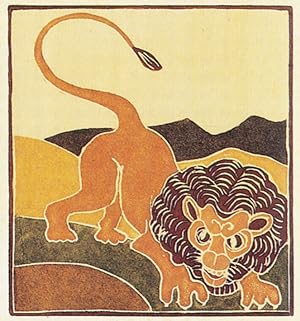
![Image du vendeur pour The First Book [Third Book; Fourth and Fifth Books] of the Works: Containing Five Books of the Lives, Heroick Deeds, and Sayings of Gargantua, And his Sonne Pantagruel. mis en vente par Peter Harrington. ABA/ ILAB.](https://pictures.abebooks.com/inventory/md/md31636181292.jpg)

